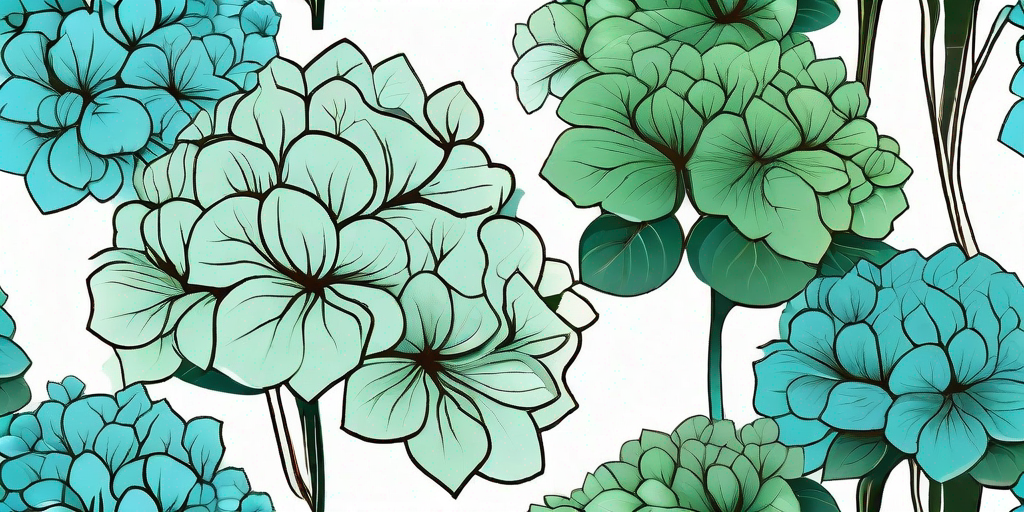
Welcome to the wonderful world of Hydrangeas, where the blooms are as big as your head and the colors as vibrant as a rainbow. If you're a fan of these flamboyant flowers, you're in the right place. We're about to embark on a journey of Hydrangea happiness, exploring how to prolong your blooms and keep your garden looking gorgeous.
Understanding Your Hydrangea
Before we dive into the nitty-gritty of Hydrangea care, let's take a moment to appreciate these botanical beauties. Hydrangeas are deciduous shrubs known for their large, showy flower heads. They come in a variety of shapes and colors, from the classic mophead with its round, puffy blooms to the lacecap with its delicate, flat flowers.
Hydrangeas are a bit like the divas of the plant world. They demand attention, and they're not afraid to show it. But with the right care and attention, they'll reward you with a spectacular display of blooms that can last all summer long.
The Hydrangea's Secret Weapon
One of the most fascinating things about Hydrangeas is their ability to change color. This isn't some sort of botanical magic trick, but a result of the soil's pH level. Acidic soils will give you blue flowers, while alkaline soils will produce pink blooms. So, if you're not happy with the color of your Hydrangea, don't blame the plant - blame your soil!
How to Prolong Your Blooms
Now that we've got to know our Hydrangeas a little better, let's get down to business. How do we keep those beautiful blooms coming all summer long? Here's the secret: it's all about the care and feeding.
Watering Your Hydrangea
Hydrangeas love water - it's in their name, after all. But like a diva with her champagne, they prefer it in moderation. Too much water can lead to root rot, while too little can cause wilting. The key is to keep the soil consistently moist, but not waterlogged. A good rule of thumb is to water your Hydrangea when the top inch of soil feels dry to the touch.
Feeding Your Hydrangea
Hydrangeas are heavy feeders, and they need a steady supply of nutrients to produce those big, beautiful blooms. A slow-release, balanced fertilizer is the best choice for these hungry plants. Apply it in the spring and again in mid-summer to keep your Hydrangea happy and healthy.
Pruning Your Hydrangea
Pruning is a bit like a spa day for your Hydrangea. It helps to keep the plant healthy, promotes new growth, and can even enhance the size and quality of the blooms. But before you grab your shears, there's something you need to know. Not all Hydrangeas are pruned in the same way.
Pruning Mophead and Lacecap Hydrangeas
Mophead and Lacecap Hydrangeas bloom on old wood, which means the buds for next year's flowers are formed in the current year. So, if you prune these types of Hydrangeas in the spring, you'll be cutting off the flower buds and will end up with a bloom-less plant. The best time to prune these Hydrangeas is in the late summer, after they've finished blooming.
Pruning Panicle and Smooth Hydrangeas
Panicle and Smooth Hydrangeas, on the other hand, bloom on new wood. This means you can prune them in late winter or early spring without fear of losing your blooms. In fact, a good prune can actually encourage more flowers to form.
Hydrangea FAQs
Now that we've covered the basics of Hydrangea care, let's tackle some of the most common questions about these fabulous flowers.
Why are my Hydrangea leaves turning yellow?
Yellow leaves can be a sign of overwatering or poor drainage. Check the moisture level of your soil and adjust your watering schedule as needed. If the problem persists, you may need to improve the drainage in your garden.
Why aren't my Hydrangeas blooming?
There could be several reasons why your Hydrangeas aren't blooming. It could be due to over or under watering, lack of sunlight, poor soil nutrients, or incorrect pruning. Review your care routine and make any necessary adjustments.
Conclusion
Hydrangeas are a joy to grow, and with the right care, they can provide you with a spectacular display of blooms all summer long. So, whether you're a seasoned gardener or a budding green thumb, why not add a touch of Hydrangea happiness to your garden?
Remember, a happy Hydrangea is a blooming Hydrangea. And a blooming Hydrangea is a sight to behold. So, here's to Hydrangea happiness - may your blooms be plentiful and your garden be filled with color!















